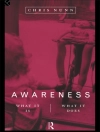This is the golden age of cognitive therapy. Its popularity among society and the professional community is growing by leaps and bounds. What is it and what are its limits? What is the fundamental nature of cognitive therapy? It is, to my way of thinking, simple but profound. To understand it, it is useful to think back to the history of behavior therapy, to the basic development made by Joseph Wolpe. In the 1950s, Wolpe astounded the therapeutic world and infuriated his colleagues by finding a simple cure for phobias. The psychoanalytic establishment held that phobias-irrational and intense fear of certain objects, such as cats-were just surface manifesta- tions of deeper, underlying disorders. The psychoanalysts said their source was the buried fear in male children of castration by the father in retaliation for the son’s lust for his mother. For females, this fear is directed toward the opposite sex parent. The biomedical theorists, on the other hand, claimed that some as yet undiscovered disorder in brain chemistry must be the underlying problem. Both groups insisted that to treat only the patient’s fear of cats would do no more good than it would to put rouge over measles. Wolpe, however, reasoned that irrational fear of something isn’t just a symptom of a phobia; it is the whole phobia.
Frank M. Dattilio
Comprehensive Casebook of Cognitive Therapy [PDF ebook]
Comprehensive Casebook of Cognitive Therapy [PDF ebook]
¡Compre este libro electrónico y obtenga 1 más GRATIS!
Idioma Inglés ● Formato PDF ● ISBN 9781475797770 ● Editor Frank M. Dattilio ● Editorial Springer US ● Publicado 2013 ● Descargable 3 veces ● Divisa EUR ● ID 4673829 ● Protección de copia Adobe DRM
Requiere lector de ebook con capacidad DRM












